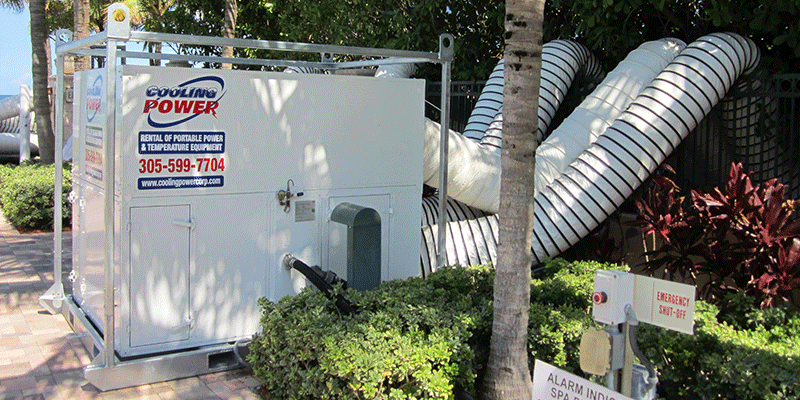An air handler is a device used to circulate and regulate indoor air as part of a heating, ventilating and air conditioning system. The air handler has an important role to play in the function of your air conditioning equipment. It is tasked with circulating conditioned air throughout your home. Air handlers make your system more energy efficient and provide higher quality air. As a result, your outdoor unit doesn’t have to work as hard.
Small air handlers are called terminal units. They often come with just an air filter, coil, and blower. Larger air handlers capable of conditioning 100% outside air, and containing no re-circulated air, are known as makeup air units. Units made for the outdoors are called packaged units or rooftop units.
Air handlers generally come in a large box that contains a blower, filter racks, heating or cooling elements, dampers and sound attenuators. Air handlers connect to a ductwork ventilation system responsible for distributing the conditioned air through the building and returning it to the AHU.
Do you need an air handler?
If you have a split-system air conditioner or heat pump, then yes, you need an air handler. The air handler helps circulate the air involved in the heating or cooling process. It is an indoor component that works in conjunction with the outdoor component. The evaporator coil takes heat out of the building and then blows this cooled air through a series of ducts in your building, which are attached to the air handler.
Living in Florida’s climate, you more than likely need a split-system air conditioner in order to properly maintain comfortable indoor temperatures all year long. It doesn’t get too cold in Florida, and so the use of a heat pump with an air handler should effectively solve all of your heating and cooling needs. On the other hand, if you live somewhere that reaches below freezing temperatures during the winter, you’re going to need more to stay warm, such as a high-efficiency gas furnace.
What is a chilled water system?
Our portable chilled water air handlers operate by cooling water down to around 40 to 45 degrees F. This chilled water is then moved through the building via pipes that are connected to air handlers. This system allows for greater flexibility, because the water pipes operate like evaporator coils in a standard HVAC system.
Air Conditioners Vs. Air Handlers
What are the differences between an air conditioner and an air handler?
Air handlers are an important part of your overall HVAC system, but they are not the complete air conditioning system.
An air handler is responsible for housing the equipment necessary to move air through your home or business. In most cases, it is located inside and operates both the heating and cooling systems. Air handlers look like a furnace, and are sometimes even mistaken for one. Air handlers can be made to work with a heat pump or air conditioner. It includes the indoor coil, which depending on the setting your system is running on, is used for both heating and cooling.
Air conditioning units include the condenser and are usually kept outside of your home or business. Air conditioners actively pull heat out of the building through a variety of components configured together, and then this hot air is redirected outside. Throughout the process, air moves through the system via return ducts and over a refrigerant coil. Instead of adding cold air to the room, which is what it feels like, the system is actually just pulling hot air out and then recirculating the same air (without the heat) back into the building.
What’s the difference between the air handler and the condensing unit?
An air handler and a condensing unit are different components used for a split heat pump heating and air conditioning system. While condensing units are typically located outside of the home or building, air handlers are generally housed inside. Air handlers blow air through the evaporator coil and then transfer it all throughout the building. They rely on a system of ductwork that ensures every room is equally cooled off, or heated up. The main components included in a condensing unit are a compressor and condenser coil.
Cooling Power offers a wide variety of portable chilled water handlers available for rent, even at the very last minute or in an emergency. All of our units are guaranteed reliable, energy efficient and available in a wide variety of specs—from 5,000 CFM to 20,000 CFM. These high-powered air handlers are ideal for large-scale cooling. Plus, we offer units that are trailer-mounted, skid-mounted or designed with swivel casters for easy mobility.

